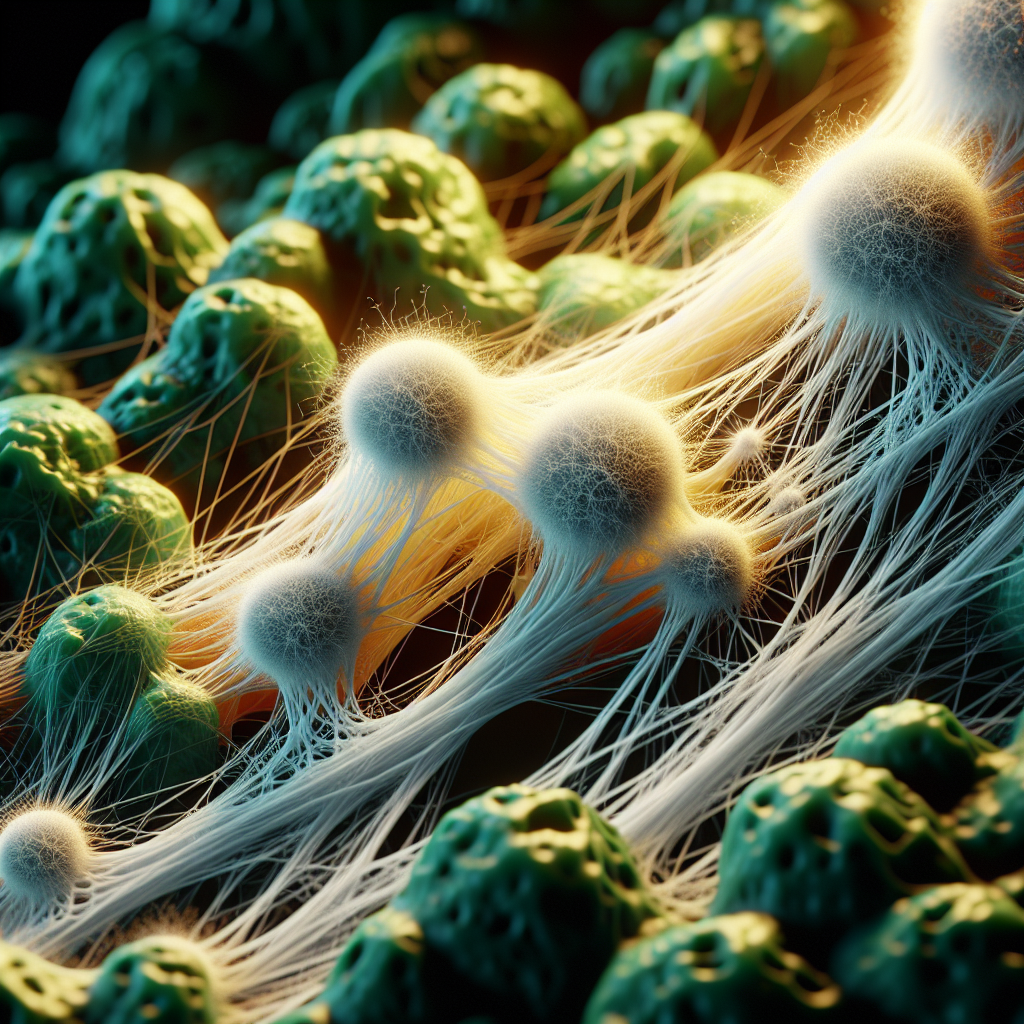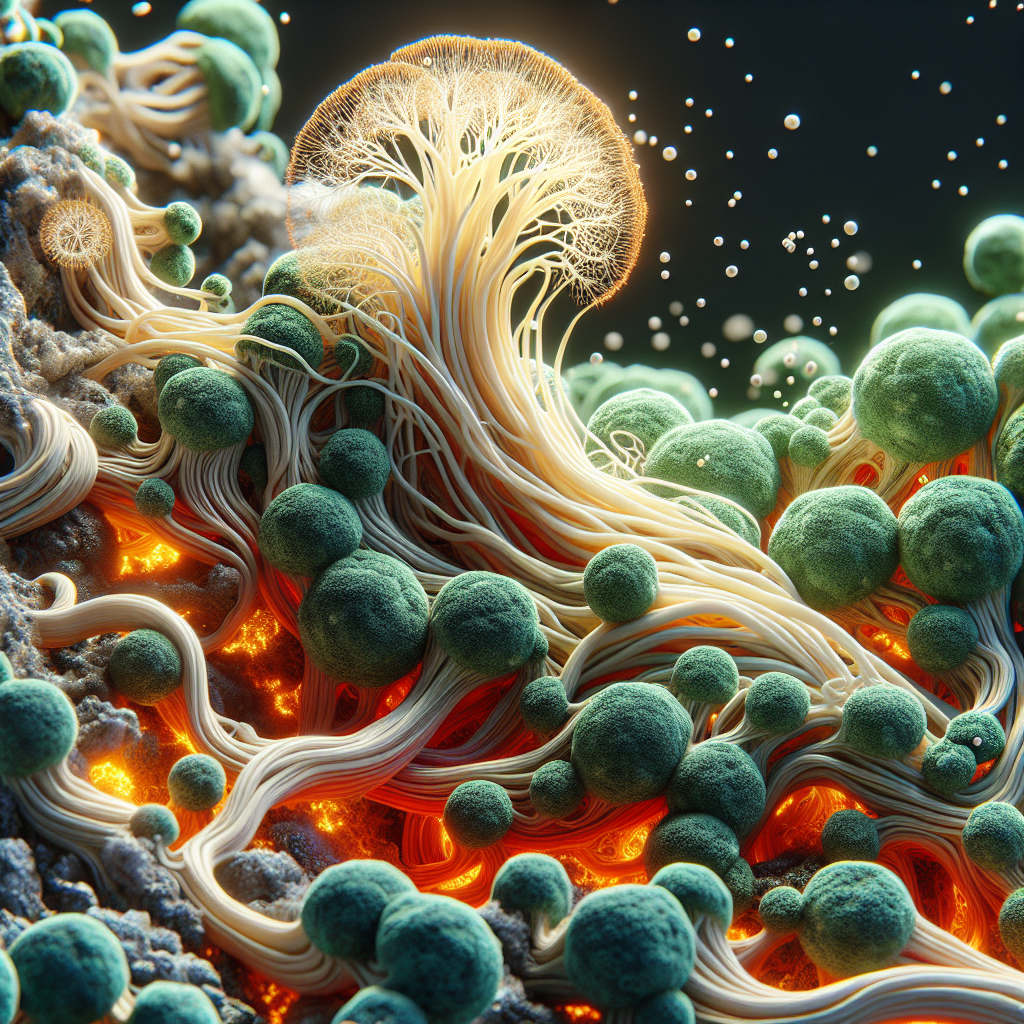In the exploration of the role of mycelium in the contest against green mold, an array of intriguing perspectives emerge. The potential of mycelium – a component of fungus that essentially forms its root system – to battle the pervasive green mold menace is a topic of considerable significance in today’s environmentally-conscious age. This article directs your focus toward the scientific convergence and divergence regarding the potential alliance between mycelium and green mold eradication, offering a rich blend of knowledge and insights that draw from various multidisciplinary investigations.
Understanding Mycelium and Green Mold
The understanding of biology and the natural world provides crucial insight into potential solutions for our problems. Two such fascinating biological entities are Mycelium and Green Mold. Often, these terms are heard in discussions pertaining to environmental conservation, agriculture, waste reduction, and other biological fields.
Definition of Mycelium
Mycelium refers to the vegetative part of a fungus. Just like plants have roots, mycelium serves as the ‘root structure’ for fungi. It consists of a mass of branching, thread-like hyphae that penetrate into the soil, wood, or any other nutrient dense substrate.
Characteristics of Mycelium
One key characteristic of mycelium is its expansive nature. It can spread over large areas, often occupying a few meters up to several kilometers. This growth is not just limited horizontally but could extend deep into the substrate as well. Another noteworthy aspect about mycelium is its ability to decompose organic matter, playing an essential role in nutrient recycling. It also forms mutualistic relationships with plants, aiding them in nutrient absorption.
Definition of Green Mold
Green mold, as the name suggests, is a type of mold characterized by its green color. It belongs to the Penicillium genus and is widespread in nature. It can be found on materials with high organic content, such as foods, soil, compost, and others.
Characteristics of Green Mold
Green mold is relatively easy to identify due to its unique green color. It displays speedy growth and can quickly colonize large surfaces. Due to its saprophytic nature, green mold breaks down complex organic materials, releasing nutrients back into the ecosystem. However, it often competes with other organisms for resources, becoming a threat to their existence.
How Mycelium Works
Just below the surface in the world of fungi, we find the dynamic operation of mycelium.
The Mycelium Network
The mycelium network, often compared to the internet, is an intermeshed grid that allows for rapid transfer of nutrients and chemical signals between various organisms in an ecosystem. Through this intricate network, mycelium communicates with and quite literally forms the support infrastructure of forests and other flora.
Mycelium and Decaying Matter
One of the most important roles of mycelium is decomposing organic matter. Armed with potent enzymes, mycelium breaks down dead and decaying material allowing for the rich recycling of nutrients back into the earth’s ecosystem.
Mycelium and Nutrient Cycling
Mycelium plays a major part in the cycling of vital nutrients like nitrogen and carbon. By facilitating the breakdown of organic matter, it helps lock in these nutrients into the soil, making them available for plant use.

The Threat of Green Mold
Despite its naturally occurring status, the sudden proliferation of green mold can create daunting challenges.
Damage Caused by Green Mold
Green Mold, being a saprophytic mold, can quickly decompose organic matter. This property means it can severely damage materials like foodstuffs, textiles, or even structures made of wood. It could also adversely affect crop yields, leading to significant agricultural losses.
Green Mold and its Deterioration Effect
Green mold launches an act of biodegradation on materials it colonizes, leading to the physical destruction and loss of structural integrity. It can also cause health issues when present in inhabited areas.
Measures to Combat Green Mold
Control measures for green mold include the use of fungicides, careful control of humidity and temperature, good sanitation practices, and biological control methods using other organisms like mycelium.
Mycelium’s Defense Mechanisms
Mycelium has developed interesting ways to survive the fungal kingdom’s rigors and to ward off threats such as green mold.
Understanding Mycelium’s Resistance Abilities
Mycelium’s resilience lies in various factors. One of the key abilities is its possibility to adapt rapidly to new conditions. Equipped with a diverse set of enzymes, it can break down complex substances, neutralizing potential threats.
Mycelium’s Biochemical Defense
Mycelium produces a range of biochemical compounds to defend against other organisms. These include antimicrobial compounds that inhibit or slow the growth of other competing species.
Mycelium and Immune Responses
Though not as complex as the immune response found in animals, mycelium has an impressive system of recognizing and reacting to a foreign body. It deploys various methods to insulate and protect itself from potential threats including the green mold.

Mycelium vs. Green Mold
The interaction between mycelium and green mold is a complex dance of competition, survival, and mutual inhibition.
Mycelium’s Interaction with Green Mold
In their overlap zones, mycelium often competes with green mold for space and resources. Mycelium, known to produce various antimicrobial compounds, can aid in restricting the growth of this competitor.
Research Studies on Mycelium’s Effect on Green Mold
Emerging research sheds light on the potential of mycelium to combat green mold. Studies have shown that certain mycelium strains can inhibit the growth of green mold, presenting an interesting possibility in mold control.
Factors influencing Mycelium’s Effectiveness Against Green Mold
A multitude of factors can impact the effectiveness of mycelium against green mold. These include the type of mycelium strain, the environmental conditions, and the nature of interaction with green mold.
Possible Strategies for Combating Green Mold with Mycelium
The biocontrol potential of mycelium against green mold is an exciting avenue worth exploring.
Potential Use of Mycelium Against Green Mold
Mycelium, with its unique properties, could be harnessed as an eco-friendly solution to combat green mold. By introducing certain mycelium strains, one could inhibit the growth of harmful molds, thereby potentially mitigating the substantial damage they cause.
Challenges in Implementing Mycelium-Based Green Mold Combat Techniques
While the potential of mycelium is promising, there are challenges that need addressing. These include identifying the right mycelium strains, setting up the ideal growth conditions, and ensuring that it does not itself present any ecological imbalances.
Prospects for Mycelium-Based Mold Control Methods
Despite the challenges, the prospects for mycelium-based mold control methods are worth exploring. The incentive is not just the mitigation of the green mold crisis, but also the potential environmental benefits that accompany such a sustainable approach.
Mycelium in Agriculture
The potential benefits of mycelium extend beyond simple mold combat and possess potential for a whole agriculture revolution.
Mycelium’s Role in Ecological Agriculture
Mycelium contributes to soil health and plant nourishment. By assisting in the decomposition of organic matter, it enriches the soil with vital nutrients and makes them more accessible for plant roots.
Mycelium and Soil Fertility
Through its activities, mycelium improves the organic content of the soil, enhancing its fertility. It also aids in soil structure stabilizing, reducing soil erosion, and aiding in water retention.
Potential Use of Mycelium in Controlling Green Mold in Agriculture
The use of mycelium as a biocontrol agent against green mold in agriculture opens a new chapter in sustainable farming. By inhibiting the growth of harmful molds, mycelium could improve crop health and yields, thereby augmenting food production in a sustainable and eco-friendly manner.
Commercial Use of Mycelium Against Green Mold
Capturing the natural capabilities of mycelium offers potential for commercial opportunities.
Commercial Products Using Mycelium
Several commercial products already capitalize on mycelium’s properties. These range from bio-pesticides, soil enhancers, and even to more surprising applications like sustainable packaging or furniture.
Economic Feasibility of Using Mycelium as a Green Mold Repellant
The economic feasibility of using mycelium against green mold is subject to several factors like production cost, market acceptance, and effectiveness in different scenarios. Still, considering the substantial damage caused by green mold, an effective mycelium-based solution could prove economically advantageous.
Challenges and Opportunities in Mycelium-based Product Development
While challenges exist in product development and scalability, the discovery of new mycelium strains with enhanced properties, and advancements in biological engineering suggests a promising outlook for mycelium-based products.
Future Perspectives on Mycelium and Green Mold
While we have only begun to understand the potential and complexities of mycelium and green mold, the future holds significant promise.
Future Research Needs on Mycelium and Green Mold
More extensive research is needed to better understand the interaction dynamics between mycelium and green mold. Identifying ideal match-ups between specific mycelium strains and types of green mold could be a valuable path for future investigations.
Potential Limitations and Unintended Consequences of Using Mycelium
Like any biological solution, the use of mycelium for controlling green mold could have unintended consequences. These could include the possibility of an uncontrolled spread, an impact on native species, or even potential allergenicity issues.
Innovations on the Horizon: Mycelium-Based Technologies Against Green Mold
As we continue to explore the capabilities of mycelium, new avenues are likely to emerge. Mycelium-based technologies could offer sustainable and eco-friendly solutions that tackle not just green mold but a variety of ecological and industrial challenges.
Conclusion
Summary of Mycelium’s Role in Combating Green Mold
In conclusion, mycelium’s potential role as a natural antagonist to green mold could be a game-changer. Harnessing its unique properties could provide sustainable solutions to some of our most critical challenges involving agricultural losses, material degradation, and overall ecological health.
Road to Future Research and Development
The road ahead for mycelium research and development is thrilling. With scientific advances, commercial prospects, and an escalating need for sustainable solutions, a more comprehensive exploration of mycelium is both timely and critical.
Finale Thoughts on Mycelium and Green Mold
As we wrap up, it’s important to note that the relationship between mycelium and green mold is a reminder of the subtle complexities and interdependencies in our natural world. Tackling the problem of green mold with mycelium is not just a battle between two organisms but a test of our ability to work with and within nature’s parameters. The true victory lies in harnessing the potential of the mycelium, not just for green mold control, but as a green solution for various ecological challenges.
